Black Progress 20 years into the 21st Century is lethargic because of our collective & consistent Mis-Education decades after 20th Century “Integration” which cultivates a shallow understanding, commercial perspective and unproductive practice of the Black Experience in American History.
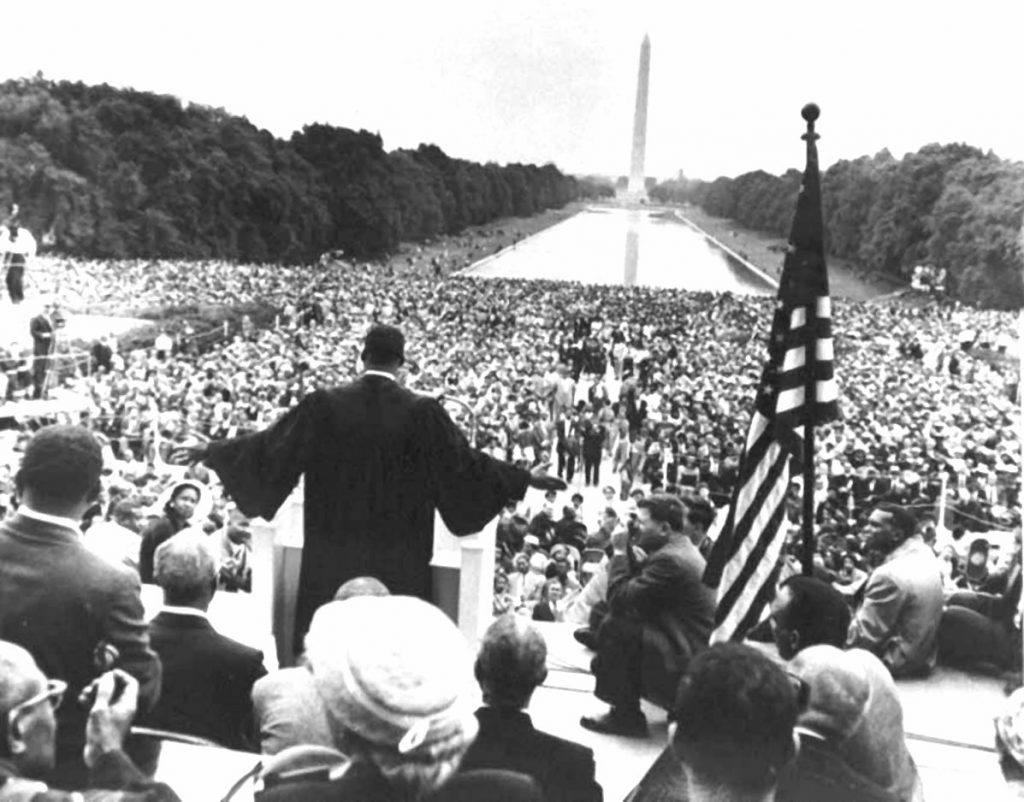
It is popular thought in American society to perceive Civil Rights being encapsulated on August 28, 1963 March on Washington with Dr. King’s “I Have a Dream” speech.

From an insightfully historical perspective, the public speech that 1st articulated The American Struggle for Civil Rights was on September 18, 1895, with Booker T Washington’s “Atlanta Compromise” delivered on this day, 125 years ago inside what is now Atlanta’s, Piedmont Park.
Booker T. Washington is a model of leadership for the J. K. Smith, Sr. Foundation. Mr. Washington’s life & legacy provides inspiration & guidance to our mission of Cultivating the hidden Genius of Black sons.
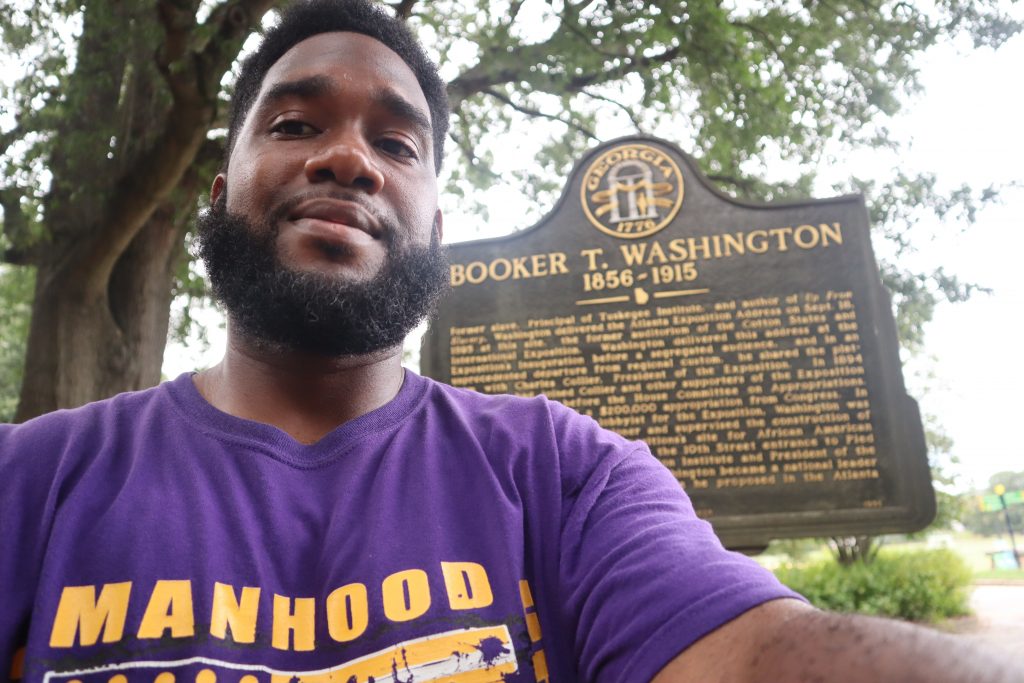
Similar to Atlanta’s campaign for the 1996 Olympics, Atlanta’s leaders in 1895 campaigned to promote Atlanta as a global center of economic & cultural development, positioning Atlanta as the resurgent phoenix of the “New South” championed by Henry Grady.


Nearly 800,000 people visited the 6,000 exhibits during the Cotton States and International Exposition held at what is today Piedmont Park in Atlanta, Georgia. Visitors saw the Liberty Bell, and celebrities, like Buffalo Bill and “March King” John Philip Sousa, who wrote “the King Cotton March” especially for the occasion.
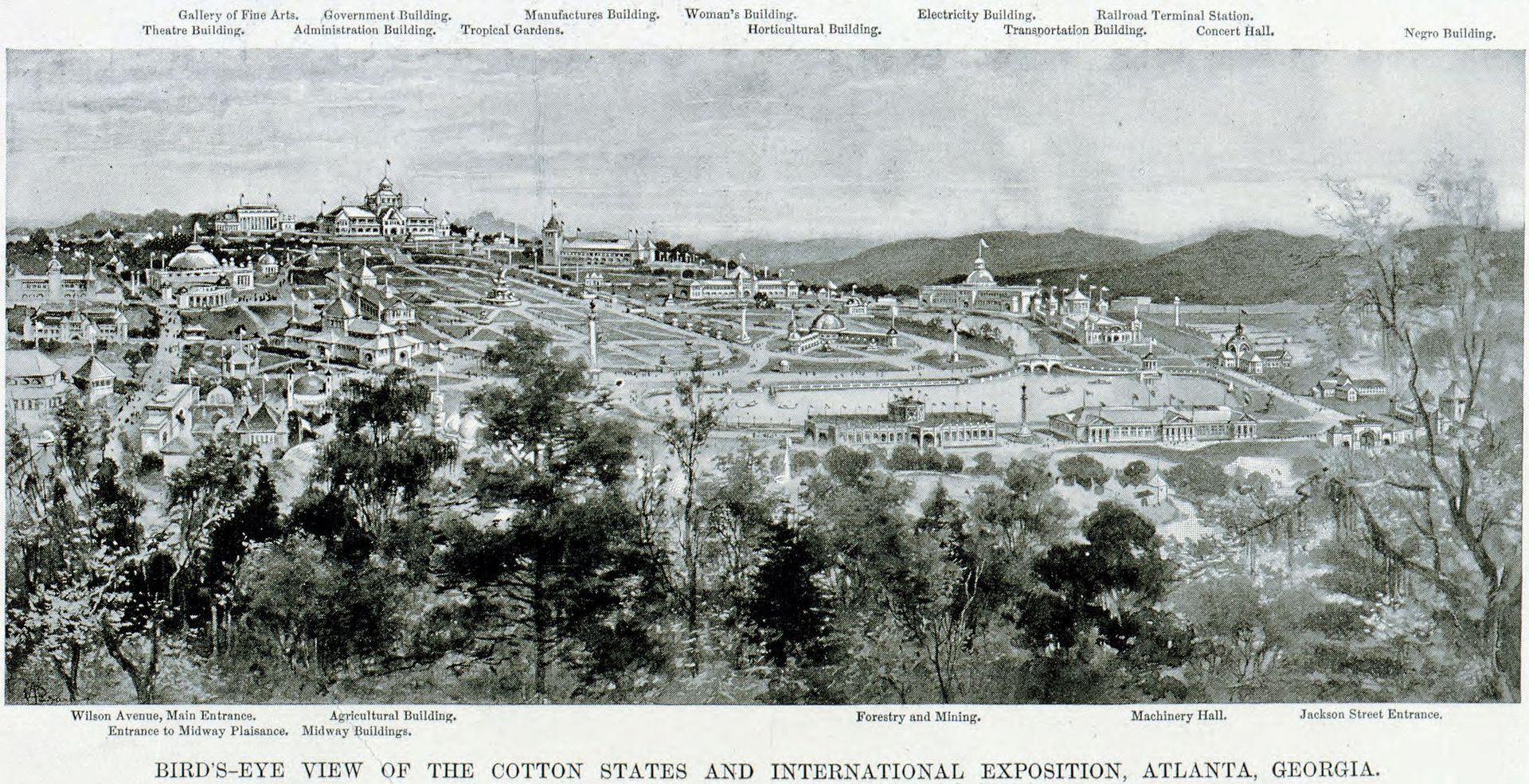
The exposition was designed to present a reformed American South to the world, 2 decades after a bloody American Civil War and hesitant Abolition of American Slavery. Showcasing a resolve of racial tension, The Cotton States and International Exposition featured exhibits from several states including various innovations in agriculture and technology. U. S. President Grover Cleveland presided over the opening of the exposition.


The most influential event of the Exposition became known as the “Atlanta Compromise” delivered by famed educator & leader Booker T. Washington on September 18, 1895 promoting racial cooperation toward economic equity.
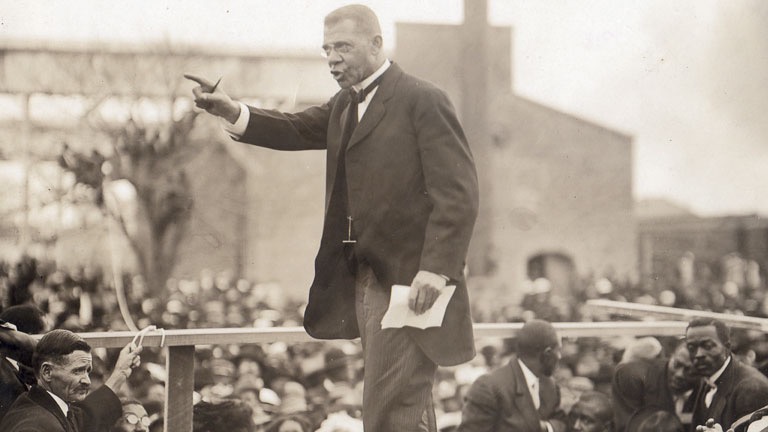
On September 18, 1895, “The Wizard of Tuskegee” Booker T. Washington spoke before a predominantly White audience at the Cotton States and International Exposition in Atlanta. His “Atlanta Compromise” address, as it came to be called, is one of the most influential & controversial speeches in American history pertaining to the peaceful resolve of race relations and collective movement of descendants of enslaved Africans 2 decades “Up From Slavery” in America.
White organizers of the Exposition cautioned that White Southerners were not prepared for such novel ideas presented by Mr. Washington, they decided that inviting & presenting an educated Black speaker would clearly present visitors with tangible evidence of racial progress in the South to further secure future investments from business leaders in the North.
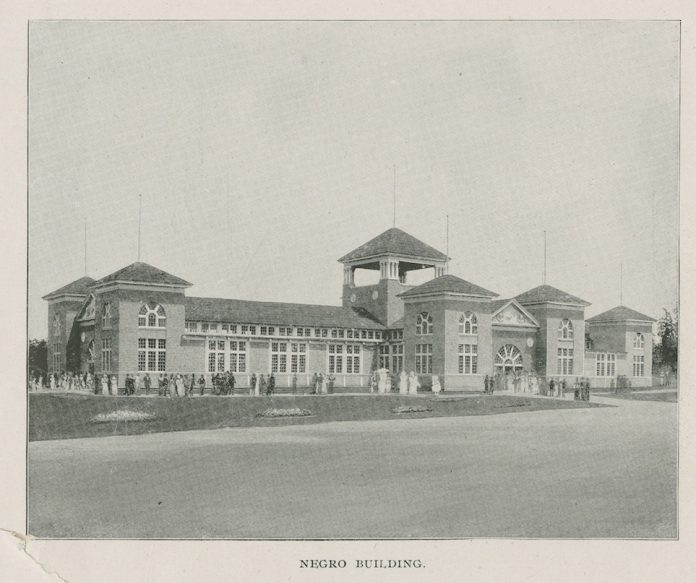
“Opening on October 21, 1895, a month after the Exposition began, the Negro Building was the first designated space, since Emancipation, for the showcase of African-American achievement in a white-dominated setting. Without it, the Exposition committee could have not received federal backing, and those funds appropriated from Congress, are what helped make the fair an international success. Strategically located at the Jackson Street entrance to Piedmont Park (what is now Charles Allen Drive), the Negro Building may have been purposely segregated, as its entrance led directly south through the Fourth Ward and Auburn Avenue; two of Atlanta’s predominantly black districts. ” ~Atlanta Magazine, Annabella Jean-Laurent
3 decades after “Emancipation”, 2 decades after “Reconstruction”, with no substantive support or protection from the Federal Government, Black America, after a century of brutally inhumane American enslavement, was forced to compete against a well resourced White America that practiced violent terrorism through their invisible government called the Klu Klux Klan to ensure Black America would not maximize their Constitutional privileges’ of Freedom & Justice through land ownership & political activism as American Citizens.
Many African Americans during the late 19th century felt that their only peaceful strategy was to avoid open conflict and negotiate some pattern of priorities. The most influential African American spokesman for this approach to Black progress was Booker T. Washington, the effective organizer & efficient leader of Tuskegee Institute in Alabama.
Mr. Washington strongly suggested for Black America to make politics secondary to education, farming, artistry and industries. With thrift, industry, and indirect political activism, he strategized that Black America would cultivate abundance & peace in a hostile environment of White America; a nation within a nation.
In 1895, in a speech at the opening of the Atlanta Cotton States and International Exposition, Mr. Washington delivered a persuasive speech to White Southerners, this speech became known as the Atlanta Compromise.
The compromise was Black America would go soft on political activism in exchange for White American Philanthropy toward educational institutions for Black America.
Mr. Washington expressed a practical perspective of Federal intervention on behalf of African Americans. Mr. Washington suggested that reform in “The New South” would have to come from individual skill & collective community. The concept present is Black Progress will be efficiently & effectively achieved when Black America collectively strategizes that “the agitation of questions of social equality is the extremest folly”
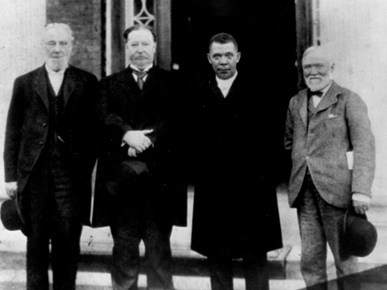
Courtesy of Library of Congress
The popular concept that Mr. Washington wanted Black America to completely abstain from American Politics is fallacious because Booker T. Washington successfully negotiated with American Presidents and White Philanthropist.

In his speech Mr. Washington suggested, “In the social life the races in the South could be as separate as the fingers, but in economic progress as united as the hand.”
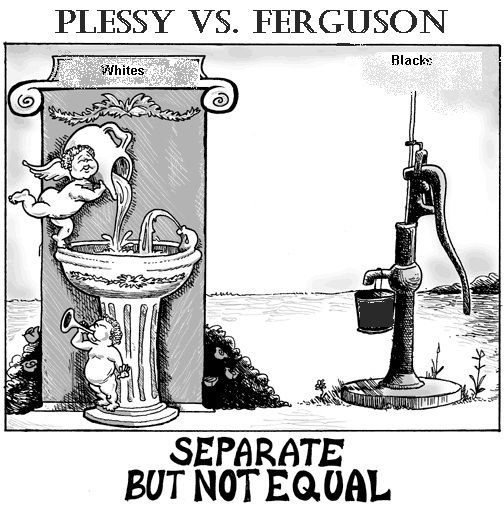
While Washington’s speech was popular among White America, his speech was too compromising for factions of Black Academia. Some scholars suggest that Mr. Washington’s 1895 speech of accommodation established the political narrative of the 1896 Supreme Court decision of “Separate but Equal” in the Plessy vs. Ferguson case.
While leaders in both Northern and Southern White America greeted Mr. Washington’s speech with enthusiasm, it worried Black Scholars who feared that Washington’s “accommodationist” philosophy would lock Blacks into domestic employment with no ability to organize political power.
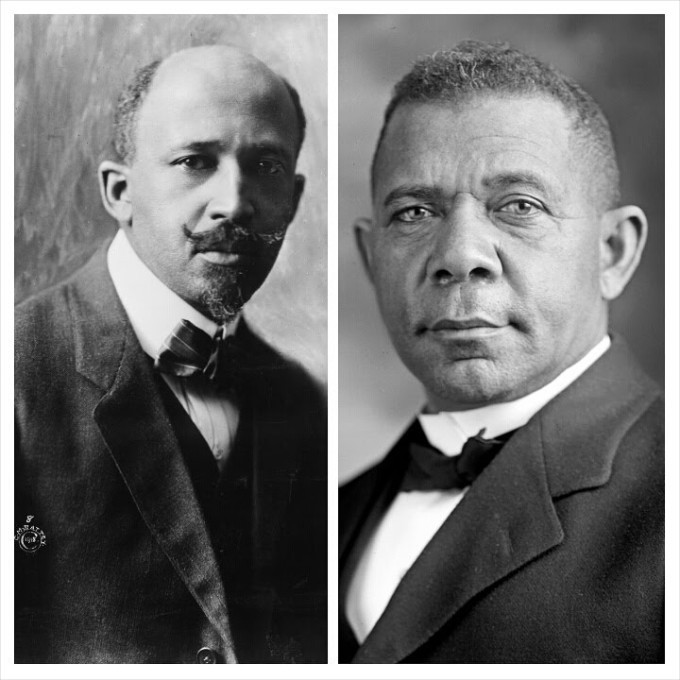
This “accommodationist” perspective of the “Atlanta Compromise” was also propagated by W.E.B. Du Bois in The Souls of Black Folk (1903): “Mr. Washington represents in Negro thought the old attitude of adjustment and submission.…[His] programme practically accepts the alleged inferiority of the Negro races.” Advocating full Civil Rights through political activism as a tangible option to Mr. Washington’s approach of perceived “accommodation”, Dr. DuBois organized like minded Black leaders into the Niagara Movement (1905), which led to the founding of the National Association for the Advancement of Colored People (1909).
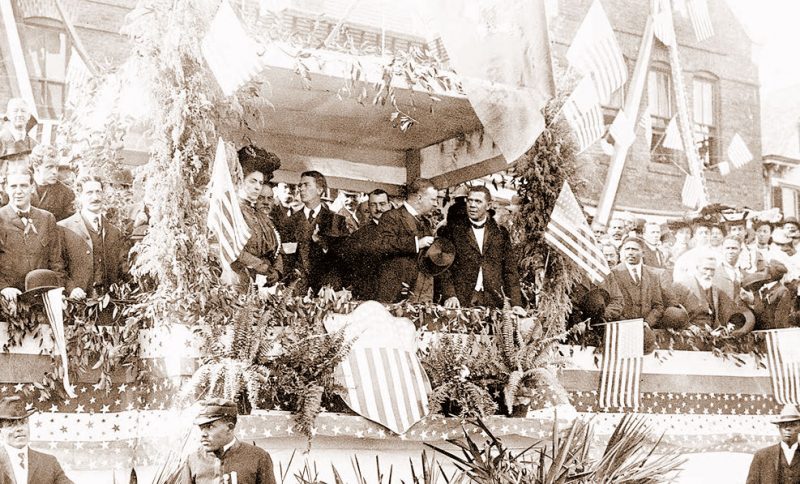
“Nearly sixteen millions of hands will aid you in pulling the load upward, or they will pull against you the load downward. We shall constitute one-third and more of the ignorance and crime of the South, or one-third [of] its intelligence and progress; we shall contribute one-third to the business and industrial prosperity of the South, or we shall prove a veritable body of death, stagnating, depressing, retarding every effort to advance the body politic.” Booker T. Washington, Atlanta Compromise
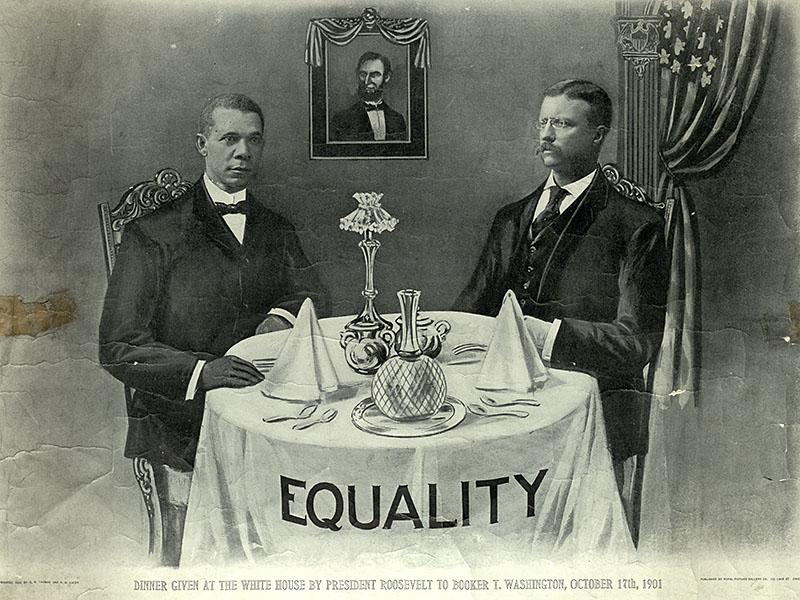
While some may question Mr. Washington’s strategy, his ability to negotiate with the wealthy & political White Americans toward the investment in Black Education is undoubtable. The above picture to the left is of U.S. President Theodore Roosevelt visiting Mr. Washington at his institution in Tuskegee. https://www.npr.org/2012/05/14/152684575/teddy-roosevelts-shocking-dinner-with-washington President Roosevelt also invited Mr. Washington to dine with him at the White House. It can be argued that because of Booker T. Washington many Historically Black Colleges & Universities (HBCU’s) funded by American Government or White Philanthropy is because of the work of Booker T. Washington
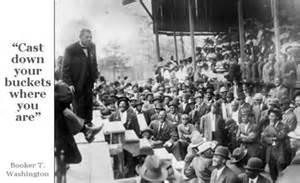
Mr. Washington was an intensely dedicated hard-worker whose contributions to the lives of African Americans in the South is undeniable. His best-known achievement, Tuskegee Institute, is still in operation — now called Tuskegee University — and some of the buildings that Washington and his earliest students built (with bricks they made on-site) are still standing and in use.
Founded in 1881 with an original appropriation of $2000, Tuskegee Institute began in a “one-room shanty” and grew through communal hard work, shrewd administrative leadership, and a great deal of didactic fervor.
Mr. Washington led the school from its inception until his death in 1915. The Institute later grew to include a VA hospital, where a Black staff served Black soldiers, and the training facilities for the now-famous Tuskegee Airmen.
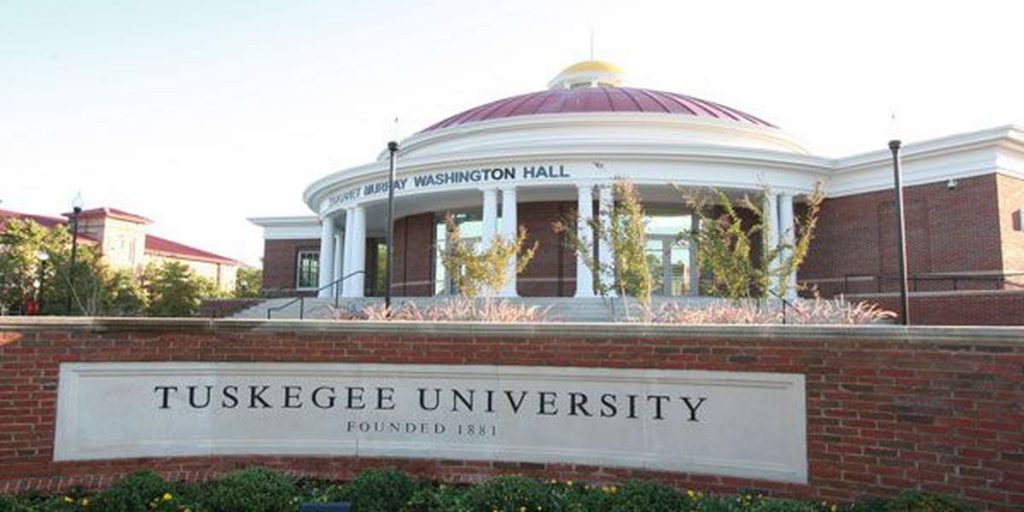
Tuskegee Institute was founded by Booker T. Washington in 1881 under a charter from the Alabama legislature for the purpose of training teachers in Alabama.
Tuskegee’s program provided students with both academic and vocational training. The students, under Washington’s direction, built their own buildings, produced their own food, and provided for most of their own basic necessities.
The Tuskegee faculty utilized each of these activities to teach the students basic skills that they could share with African American communities throughout the South.


Booker T. Washington recruited the multi-genius George Washington Carver to teach at the Tuskegee Institute in Alabama. Mr. Washington cultivated the proper resources in order for Mr. Carver to perform his best work for his agricultural & scientific studies.
George W. Carver was a supporter of Mr. Washington’s teachings, and he believed that his agricultural research could help Black farmers become more self-reliant. He wanted small Southern farms to become more sustainable and less reliant on cotton — the region’s dominant cash crop — for survival.
It can also be argued that the work of Booker T. Washington and George Washington Carver significantly help to save the South from economic & social ruin after lukewarm Reconstruction from the American Civil War and American Plantation System.
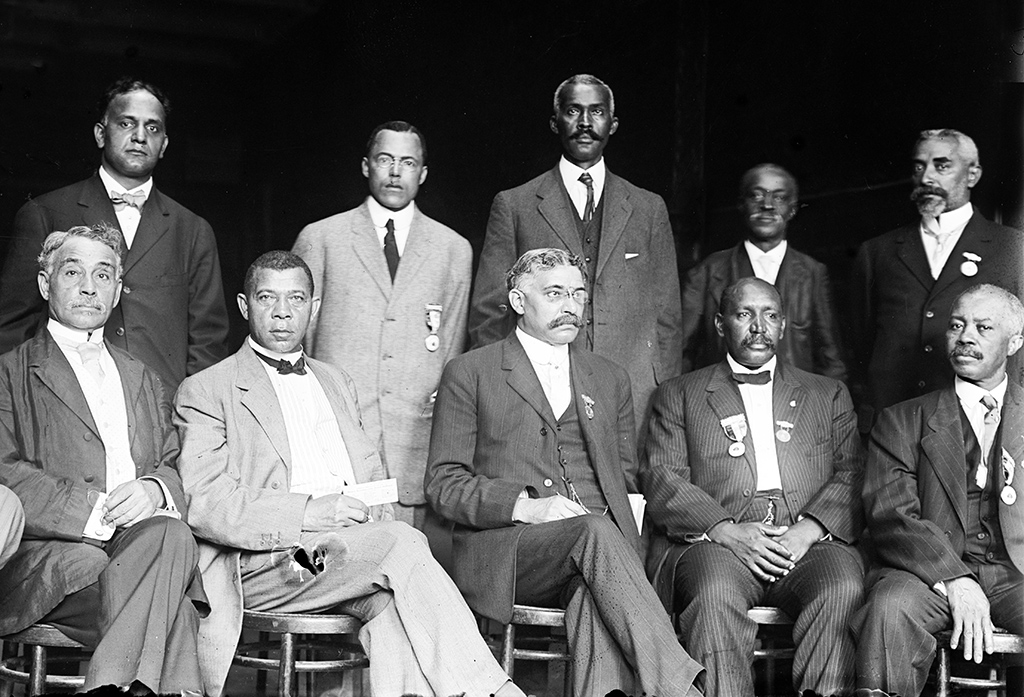


Mr. Washington’s famed reached an emerging organizer & leader in Jamaica’s Marcus Mosiah Garvey. Mr. Washington and Mr. Garvey were in communication arrangement a meeting at Tuskegee. Due to Mr. Washington’s death, Mr. Garvey shifted his focus from Tuskegee to Harlem. Mr. Garvey admired Mr. Washington’s achievement of the Tuskegee Model, were Black students learned to build & operate their own school & business.
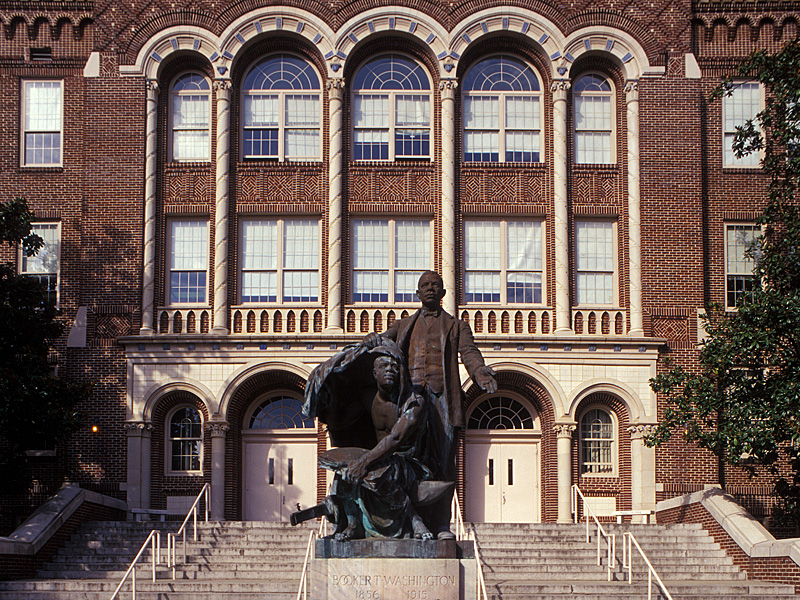
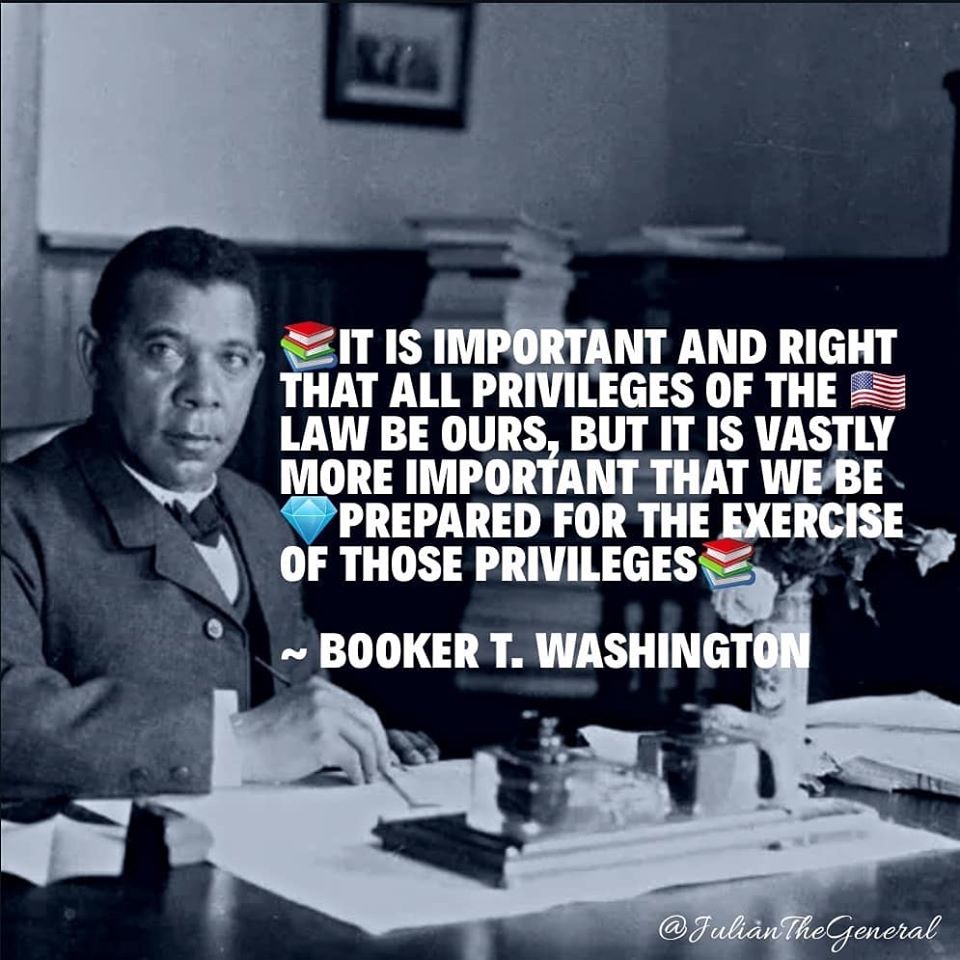



Mr. Washington closed his 1895 speech in Atlanta with a prayer & appeal for unity, peace and abundance. “Far above and beyond material benefits will be that higher good, that, let us pray God, will come, in a blotting out of sectional differences and racial animosities and suspicions, in a determination to administer absolute justice, in a willing obedience among all classes to the mandates of law. This, coupled with our material prosperity, will bring into our beloved South a new heaven and a new earth.”
